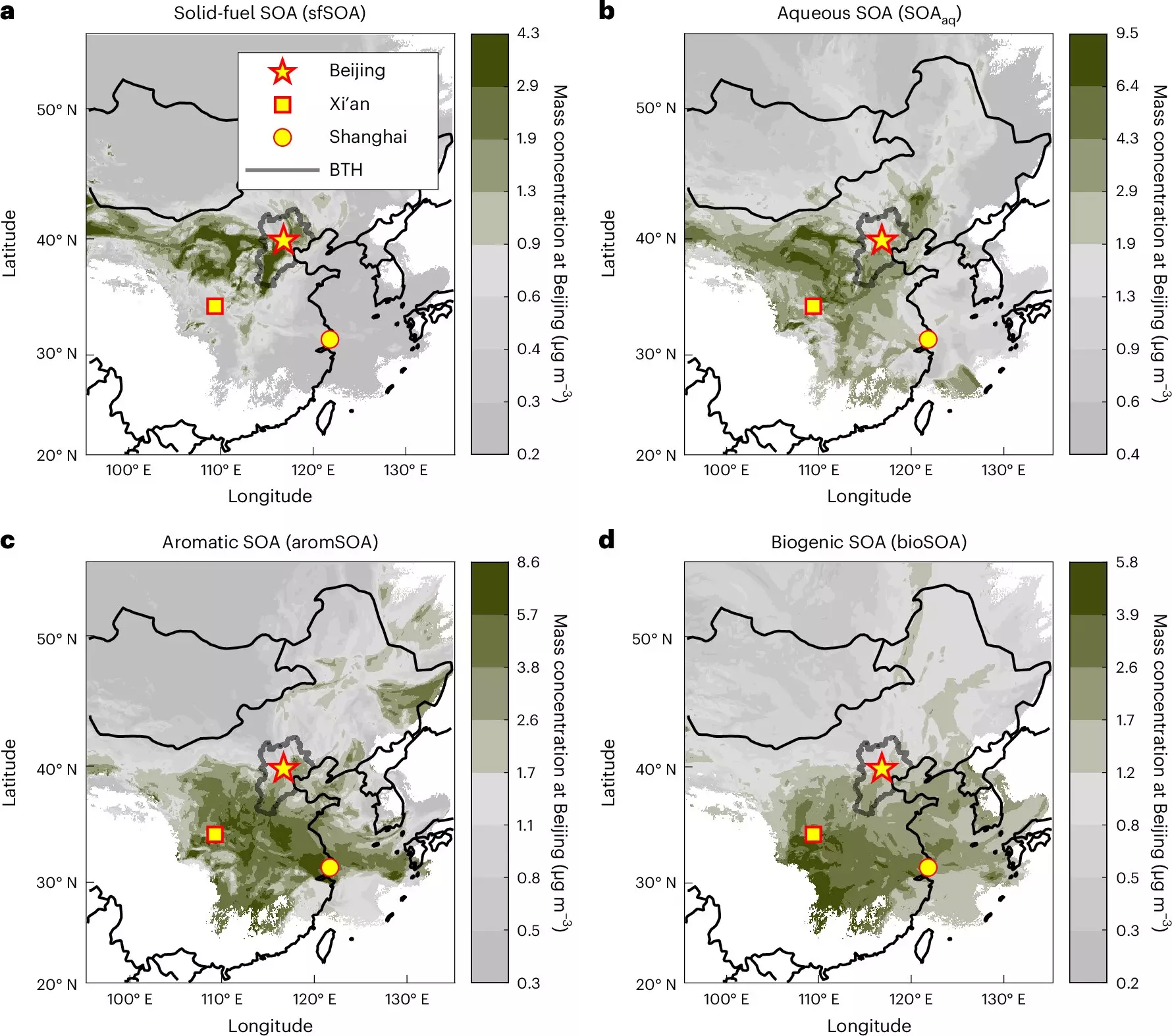The capital of China, Beijing, has long been notorious for its smog, a persistent threat to public health and a significant impediment to urban life. An international research initiative led by scholars at the Paul Scherrer Institute (PSI) has revealed promising strides toward identifying the diverse origins of aerosol pollution in this metropolitan region. This endeavor is essential in a world where air pollution claims millions of lives annually, necessitating an informed response to tackle this pressing issue.
The fundamental challenge in addressing air quality is the difficulty in pinpointing the specific sources of atmospheric pollutants. Traditional methods have often fallen short, obscuring our understanding of the specific contributions to smog formation. Thankfully, the innovative research spearheaded by environmental scientist Kaspar Dällenbach, in collaboration with Beijing University of Chemical Technology and the University of Helsinki, leverages advanced technology for a more nuanced analysis. Employing a mobile aerosol mass spectrometer allows scientists to dissect the complex makeup of smog at a molecular level, providing invaluable insights into its sources.
Using this innovative tool, the team could investigate how different sources of pollution contribute to smog over time, distinguishing discrepancies in pollution dynamics between the summer and winter months. As Dällenbach articulates, this real-time molecular analysis represents a significant breakthrough in deciphering the multifaceted nature of smog and the chemical processes that give rise to it.
One significant takeaway from the research is the realization that pollution in Beijing does not originate solely from the immediate vicinity. Instead, it paints a broader picture of a regional problem that is compounded by atmospheric transport of pollutants over vast distances. The research revealed that particulate matter is not merely the byproduct of local activities but is also influenced by emissions from surrounding areas.
In winter, for instance, the predominant sources of secondary organic aerosols are tied to the burning of wood and coal, primarily concentrated within the Beijing-Tianjin-Hebei region. Conversely, the summer months show a shift, characterized by urban emissions predominantly attributable to traffic and industrial activities, with identifiable contributions from the extensive Xi’an-Shanghai-Beijing corridor. This pivotal understanding underscores the necessity for measures that extend beyond urban boundaries, as air quality improvement strategies must encompass broader regional contexts to be effective.
The Importance of Seasonal Analysis
The study’s findings also underline the significance of understanding seasonal variations in air pollution. The atmospheric conditions that prevail during winter months, with lower temperatures and frequent heating activities, lead to a distinctive composition of aerosols in comparison to the warmer, more dynamic summer months. This recognition introduces the need for tailored approaches to combat smog, requiring adaptive strategies that resonate with seasonal variations.
Moreover, describes how secondary aerosols formed as pollutants undergo chemical changes during atmospheric transit, complicating efforts to trace them back to their origins. This dynamic signifies that air quality measures cannot be static but instead require ongoing research and adaptation, keeping pace with changing pollution patterns.
Reducing air pollution necessitates comprehensive and adequately coordinated efforts spanning multiple regional entities. Dällenbach emphasizes that effective responses must involve collaboration across various sectors and geographic areas, factoring in the interconnectedness of air pollution sources. This research serves as a call to action for policymakers, urging them to consider the broader implications of aerosol movement in strategizing emission reduction measures.
Additionally, the methodologies developed through this research are not confined to Beijing alone; they have potential applications in similar urban contexts, particularly in developing nations where data may be sparse. The capacity to adapt these approaches globally enhances our understanding of air quality challenges in diverse environments, paving the way for informed and effective solutions.
The findings published in Nature Geoscience shine a critical light on the intricacies of smog formation and its sources, providing a more holistic understanding needed to address air quality issues in Beijing. By discerning the complex interplay between local and regional pollution sources, policymakers and researchers can push for initiatives that prioritize coordinated efforts in improving air quality. As cities worldwide tackle their pollution challenges, the insights from this study offer a beacon of hope, highlighting the potential for scientific advancements to inform comprehensive strategies for cleaner air and healthier communities.


Leave a Reply